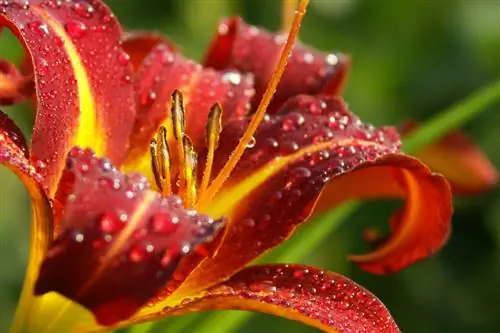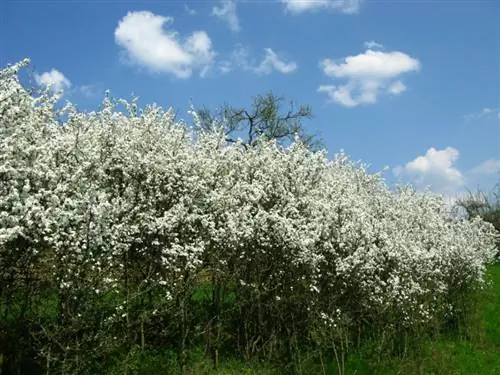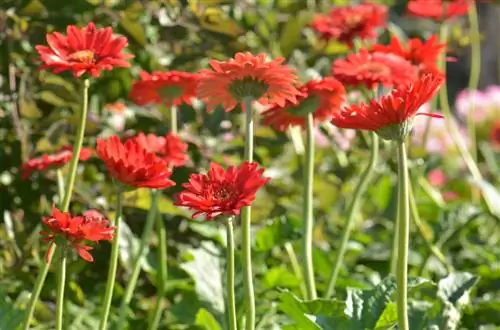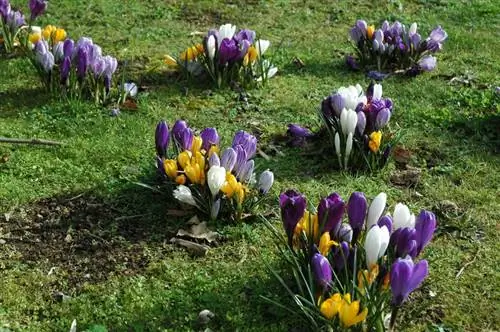- Author admin [email protected].
- Public 2023-12-16 16:46.
- Last modified 2025-06-01 06:02.
Both in the pot and outdoors, for example in the garden on the side of the path, in the fence area, on the edge of the wood, by the garden pond or in the bed - a place for the daylily is quickly found. But you shouldn't be naive when planting it
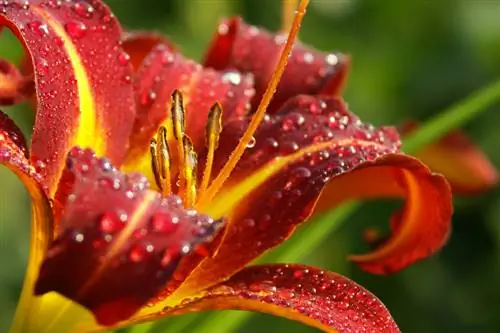
How do I plant daylilies correctly?
Spring or autumn are suitable for planting daylilies. Choose a location with lots of sun or partial shade and a planting distance of 50 to 90 cm. The daylily thrives in loose, well-drained, moderately nutrient-rich and humus-rich soil.
When is the best time to plant?
Plant your daylily - regardless of whether it is an early plant or a root tuber - in spring (from April) or autumn (until October) on a frost-free day. Even if you plant it in May, it will usually bloom the same year.
How is planting done?
If you want to plant a root, follow these steps:
- Dig a 30 cm deep planting hole
- Loosen up the planting hole well on all sides
- form a small mound
- place the root on the hill
- Distribute and spread the roots on all sides
- cover with soil
- Press earth
- Root base should be 2 cm below the soil surface
- pour on
- mulching
Which location is suitable?
The daylily is considered extremely tolerant. It can easily cope with full sun, sunny and partially shaded locations. But be careful: the less sunlight hits the plants, the more lazy they become when it comes to flowering.
What planting distance is necessary?
Sunlight is not the only deciding factor at the location. The distance to other plants and objects is also important. Depending on the daylily variety, a distance of between 50 and 90 cm should be maintained.
Which plant neighbors are suitable?
There is a large selection of potential plant neighbors. All flowers and perennials that have similar location requirements and harmonize with the daylily's flower colors are suitable. These include, for example:
- Rudbeckia
- Helenium
- Heliopsis
- Monarda
- Salvia
- Anchusa
- Helianthus
- Achillea
- Echinacea
- Asters
- Delphinium
Which substrate should be shortlisted?
The daylily is extremely undemanding when it comes to finding a suitable substrate. Whether moist or dry, acidic or alkaline - it grows and needs hardly any care. It grows best in soil with the following properties:
- easy
- well drained
- moderately nutritious
- humos
Tips & Tricks
Dark-flowered varieties should not be planted in full sun. Partial shade is the better choice so that the flowers don't fade too quickly.

